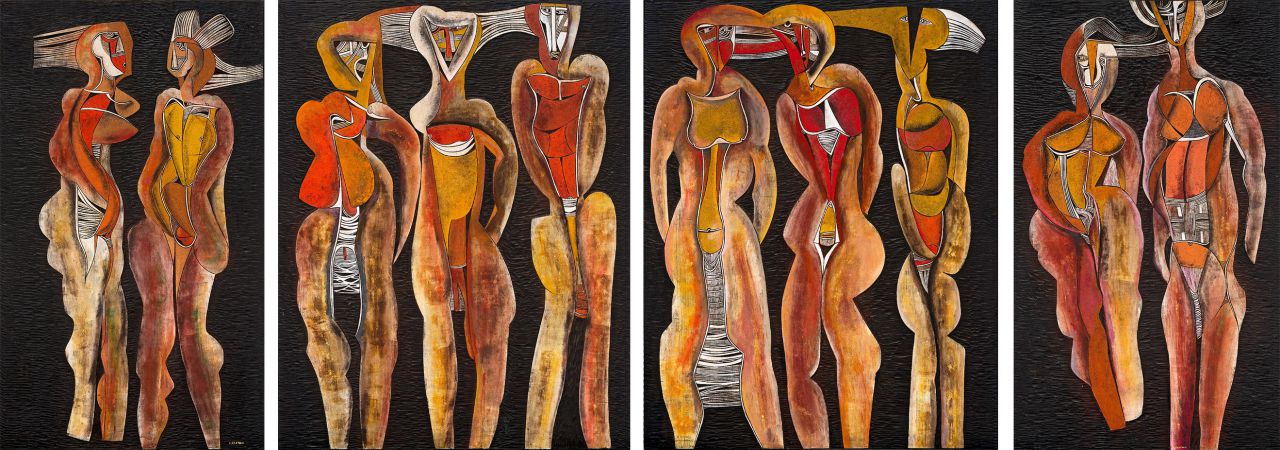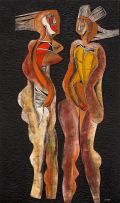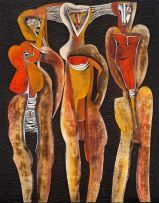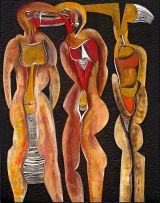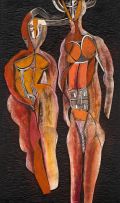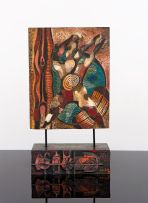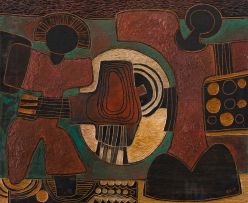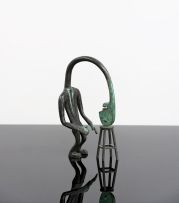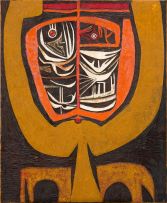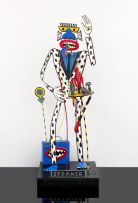Important South African and International Art
Live Auction, 7 November 2016
Evening Sale
Incl. Buyer's Premium & VAT
About this Item
all signed
Notes
This large-scale frieze of ten figures on a series of four abutting wooden panels has a contemporary yet archaic African presence. Cecil Skotnes's distinctive rendering of the human form came from an extended evolution, both from his interest in the process of printmaking and in the appreciation of traditional African art. Early in Skotnes's career as a professional artist, he encountered the art dealer Egon Guenther, a goldsmith and former gallery director in Germany who had immigrated to South Africa. Skotnes was introduced to Guenther towards the end of 1954, and the meeting proved to be a turning point in the artist's career. Through Guenther, Skotnes became more closely acquainted with German Expressionism and the expressive similarities between it and great African art.
Guenther attracted a number of artists to his gallery with a shared sensibility. These included Eduardo Villa, Sydney Kumalo, Pino Cattaneo, Cecily Sash and Skotnes himself. Their interest in a contemporary African aesthetic was formalized into a group that exhibited internationally as the Amadlozi Group, a name meaning 'spirit of our forefathers', originally suggested to Guenther by Kumalo. They had greatly differing artistic styles but were unified in their pursuit for a pronounced, indigenous character to their art, something essentially true to its African context.
It was Guenther who encouraged Skotnes to engrave on hardwood blocks, initially making abstract, bold, black and white prints. The evolution of the scale of these woodblock prints eventually led Guenther and Skotnes to recognise the potential of these incised blocks in their own right. This developed into the inking and colouring of the blocks with dry pigment as stand alone artworks, evolving into large compositions where the distinctive shapes of the figures were coloured with ochres, reds and whites. As in the present lot, the dramatic, coloured figures are set off against a dark background created by whittling a rich complex surface, related to a technique used in traditional southern African carvings.
The groups of iconic figures here stand in this series of panels at times next to each other and at others abutting or nudging each other, but it is the fluid linear traceries between the heads of the figures that seem to allude to a human connection on another level.
This expanisve work, most likely painted around 1975, epitomizes the artist's mastery of his unique medium. The unusual, composite nature of the work enables Skotnes to extend the confines of the single wooden panel more characteristic of his work. This quad-tych is uncommon in its scale as it seems more mural-like, more public in its breadth and its collective engagement.
Provenance
Purchased from Michael Stevenson in 2001; at the time Skotnes himself touched up the panels.
